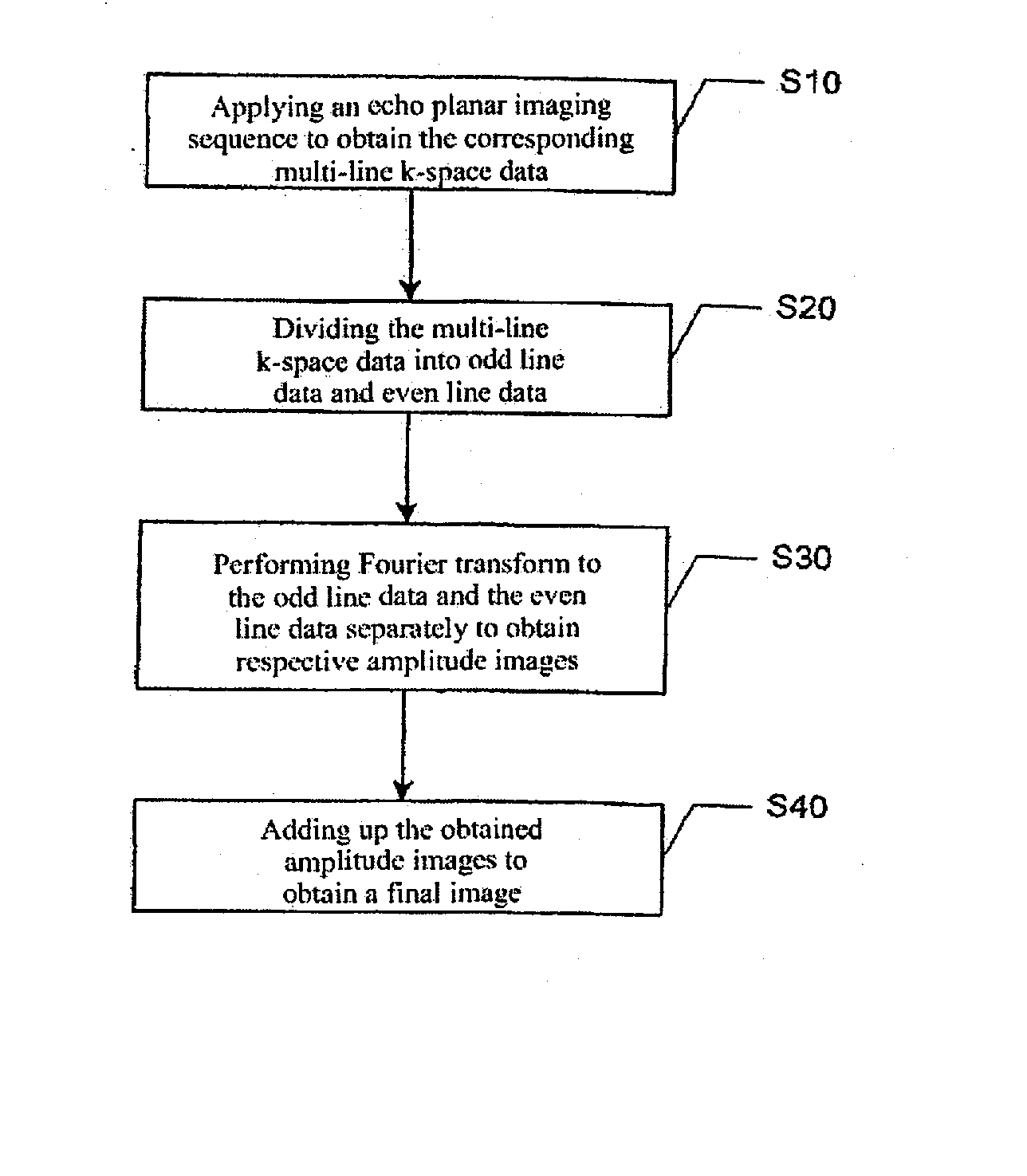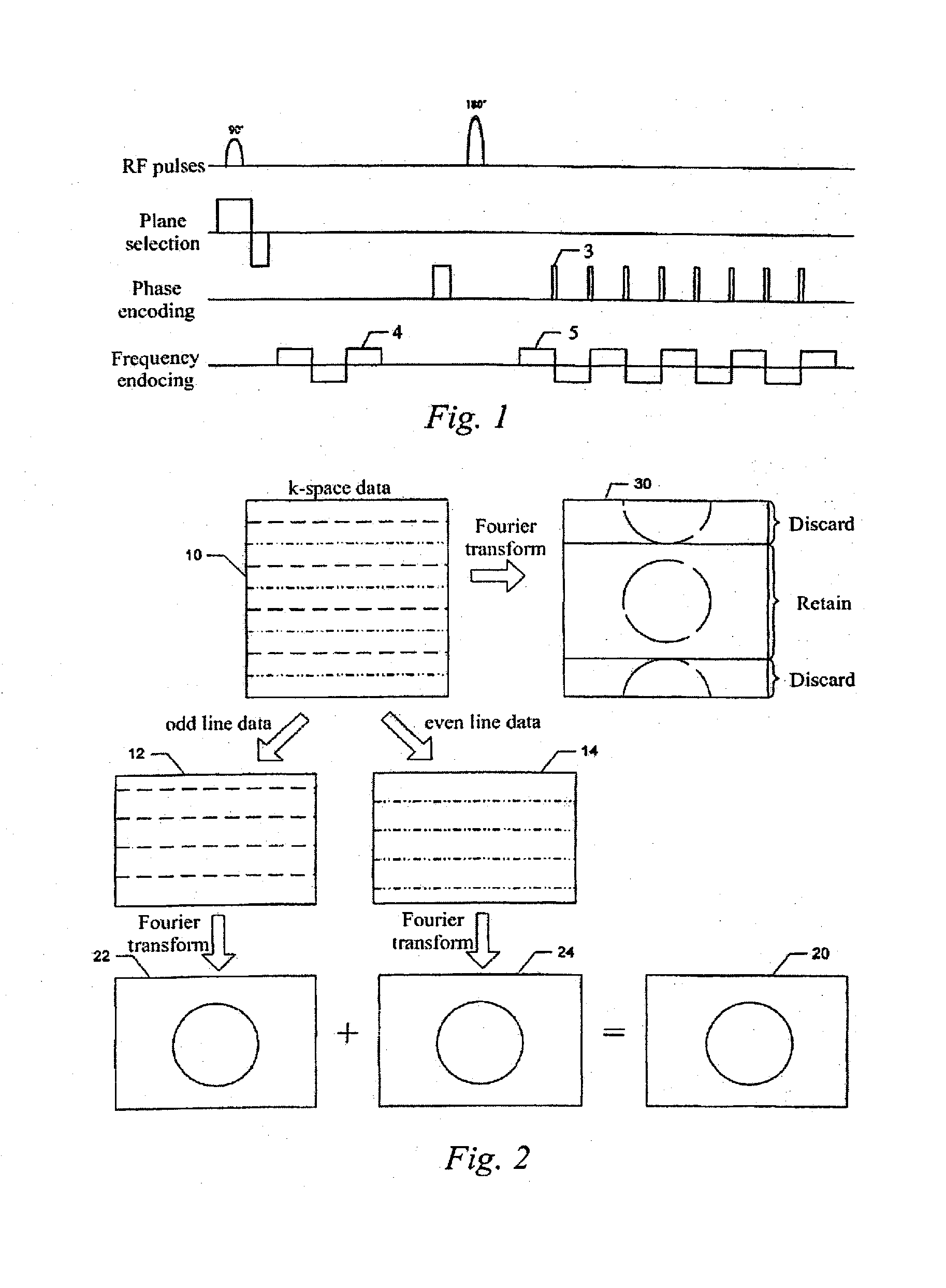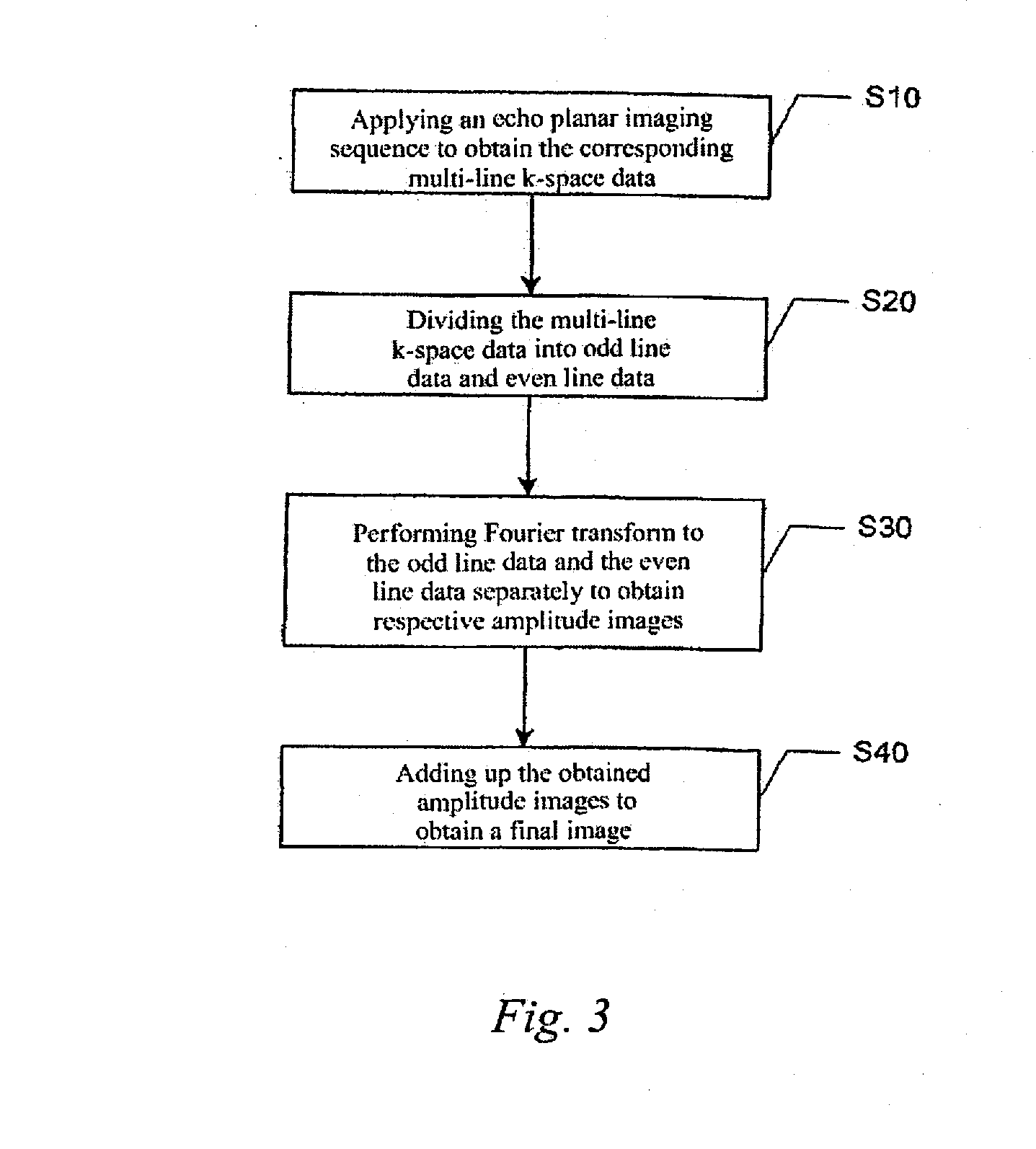Method for reconstructing image from echo planar imaging sequence
a planar imaging and reconstruction method technology, applied in the field of magnetic resonance imaging methods, can solve the problems of reducing image signal loss, and reducing the readout data under the positive and negative frequency encoding gradient. the effect of eliminating n/2 artifacts
- Summary
- Abstract
- Description
- Claims
- Application Information
AI Technical Summary
Benefits of technology
Problems solved by technology
Method used
Image
Examples
Embodiment Construction
[0019] The method for reconstructing an image from an echo planar imaging sequence according to the present invention adopts a common EPI imaging sequence, such as the conventional EPI imaging sequence shown in FIG. 1, to collect echoes for filling k-space, so as to obtain the corresponding k-space data. The conventional EPI imaging sequence in this embodiment is a single-shot EPI imaging sequence or a multi-shot EPI imaging sequence, and preferably, short phase encoding is adopted for the single-shot or multi-shot.
[0020] In the conventional EPI imaging sequence, when 90° radio frequency excitation pulses are applied, an appropriate slice selecting gradient is chosen, then 180° radio frequency pulses are applied and echoes are received after a period of TE (echo time, the time between an exciting pulse of an imaging sequence and the echo generated by it as a magnetic resonance signal). When the echoes are received, the frequency encoding gradient (that is, the readout gradient) is ...
PUM
 Login to View More
Login to View More Abstract
Description
Claims
Application Information
 Login to View More
Login to View More - R&D
- Intellectual Property
- Life Sciences
- Materials
- Tech Scout
- Unparalleled Data Quality
- Higher Quality Content
- 60% Fewer Hallucinations
Browse by: Latest US Patents, China's latest patents, Technical Efficacy Thesaurus, Application Domain, Technology Topic, Popular Technical Reports.
© 2025 PatSnap. All rights reserved.Legal|Privacy policy|Modern Slavery Act Transparency Statement|Sitemap|About US| Contact US: help@patsnap.com



